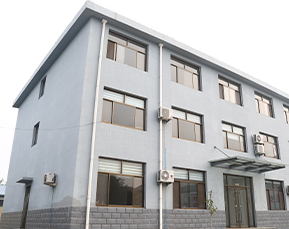 Afrikaans
Afrikaans  Albanian
Albanian  Amharic
Amharic  Arabic
Arabic  Armenian
Armenian  Azerbaijani
Azerbaijani  Basque
Basque  Belarusian
Belarusian  Bengali
Bengali  Bosnian
Bosnian  Bulgarian
Bulgarian  Catalan
Catalan  Cebuano
Cebuano  Corsican
Corsican  Croatian
Croatian  Czech
Czech  Danish
Danish  Dutch
Dutch  English
English  Esperanto
Esperanto  Estonian
Estonian  Finnish
Finnish  French
French  Frisian
Frisian  Galician
Galician  Georgian
Georgian  German
German  Greek
Greek  Gujarati
Gujarati  Haitian Creole
Haitian Creole  hausa
hausa  hawaiian
hawaiian  Hebrew
Hebrew  Hindi
Hindi  Miao
Miao  Hungarian
Hungarian  Icelandic
Icelandic  igbo
igbo  Indonesian
Indonesian  irish
irish  Italian
Italian  Japanese
Japanese  Javanese
Javanese  Kannada
Kannada  kazakh
kazakh  Khmer
Khmer  Rwandese
Rwandese  Korean
Korean  Kurdish
Kurdish  Kyrgyz
Kyrgyz  Lao
Lao  Latin
Latin  Latvian
Latvian  Lithuanian
Lithuanian  Luxembourgish
Luxembourgish  Macedonian
Macedonian  Malgashi
Malgashi  Malay
Malay  Malayalam
Malayalam  Maltese
Maltese  Maori
Maori  Marathi
Marathi  Mongolian
Mongolian  Myanmar
Myanmar  Nepali
Nepali  Norwegian
Norwegian  Norwegian
Norwegian  Occitan
Occitan  Pashto
Pashto  Persian
Persian  Polish
Polish  Portuguese
Portuguese  Punjabi
Punjabi  Romanian
Romanian  Russian
Russian  Samoan
Samoan  Scottish Gaelic
Scottish Gaelic  Serbian
Serbian  Sesotho
Sesotho  Shona
Shona  Sindhi
Sindhi  Sinhala
Sinhala  Slovak
Slovak  Slovenian
Slovenian  Somali
Somali  Spanish
Spanish  Sundanese
Sundanese  Swahili
Swahili  Swedish
Swedish  Tagalog
Tagalog  Tajik
Tajik  Tamil
Tamil  Tatar
Tatar  Telugu
Telugu  Thai
Thai  Turkish
Turkish  Turkmen
Turkmen  Ukrainian
Ukrainian  Urdu
Urdu  Uighur
Uighur  Uzbek
Uzbek  Vietnamese
Vietnamese  Welsh
Welsh  Bantu
Bantu  Yiddish
Yiddish  Yoruba
Yoruba  Zulu
Zulu conveyor idler types
Understanding Conveyor Idler Types
Conveyor idlers are critical components in a conveyor system, designed to support and guide the belt as it moves. They play a pivotal role in ensuring the efficient operation of conveyor systems found in various industries, from mining to manufacturing. The choice of idler type can significantly affect the overall performance of the conveyor system, making it vital to understand the different types available.
1. Flat Idlers
Flat idlers, also known as carrying idlers, are the most common type found in conveyor systems. They consist of a cylindrical roller mounted horizontally and are placed along the conveyor to support the load. Flat idlers are effective for a wide range of materials and are essential for ensuring the stability of the conveyor belt. They are available in various sizes and materials, providing flexibility to cater to different loading conditions and abrasion levels.
2. Trough Idlers
Trough idlers are designed to hold the conveyor belt in a trough shape, which effectively contains materials during transit. Typically arranged in sets of three, this configuration supports the side edges of the belt while allowing for better load handling. Trough idlers are particularly beneficial for bulk material handling as they reduce spillage and increase the efficiency of the conveyor system.
Return idlers are used on the return side of the conveyor belt and are crucial for supporting the belt as it moves back to the loading point. These idlers ensure that the belt remains sufficiently tensioned and aligned, preventing sagging or misalignment. Return idlers can be flat or trough types, depending on the specific requirements of the conveyor system.
conveyor idler types

4. Impact Idlers
Impact idlers are specifically designed to absorb the shock and impact of heavy material loads dropping onto the conveyor belt. These idlers feature additional cushioning or a unique design that lessens the stress placed on the belt during the loading process. By minimizing sudden impacts, wear and tear on the belt and structure are significantly reduced, extending the lifespan of the conveyor system.
5. Training Idlers
Training idlers are utilized to keep the conveyor belt aligned in its intended path. Misalignment can cause excessive wear on the belt and reduce efficiency. These idlers adjust the belt's direction and ensure that it remains on track through various stages of the conveyor system. They often come equipped with a pivoting mechanism that allows for automatic adjustments.
6. Specialty Idlers
Besides the standard types, there are specialty idlers designed for specific applications. These can include self-cleaning idlers, designed to prevent material buildup on the idlers; rubber-lined idlers for extra grip; and spiral idlers for unique belt configurations. Depending on the application requirements, these specialty idlers can enhance conveyor performance significantly.
Conclusion
The selection of the right conveyor idler type is essential for the effective operation of conveyor systems. Understanding the differing functionalities of flat, trough, return, impact, training, and specialty idlers can help in making informed decisions that optimize performance, reduce maintenance costs, and extend equipment life. As industries continue to evolve, advancements in idler design will undoubtedly enhance efficiency and sustainability in material handling processes.
-
Revolutionizing Conveyor Reliability with Advanced Rubber Lagging PulleysNewsJul.22,2025
-
Powering Precision and Durability with Expert Manufacturers of Conveyor ComponentsNewsJul.22,2025
-
Optimizing Conveyor Systems with Advanced Conveyor AccessoriesNewsJul.22,2025
-
Maximize Conveyor Efficiency with Quality Conveyor Idler PulleysNewsJul.22,2025
-
Future-Proof Your Conveyor System with High-Performance Polyurethane RollerNewsJul.22,2025
-
Driving Efficiency Forward with Quality Idlers and RollersNewsJul.22,2025





























